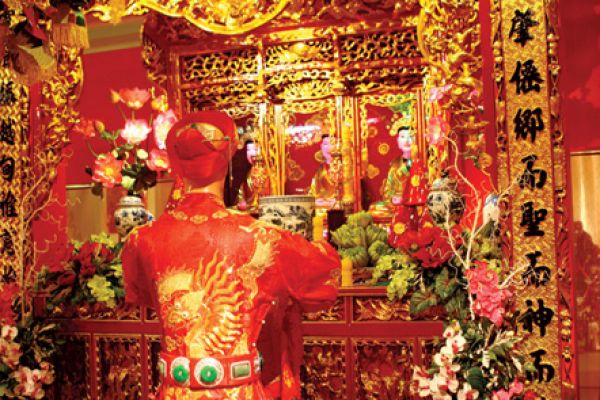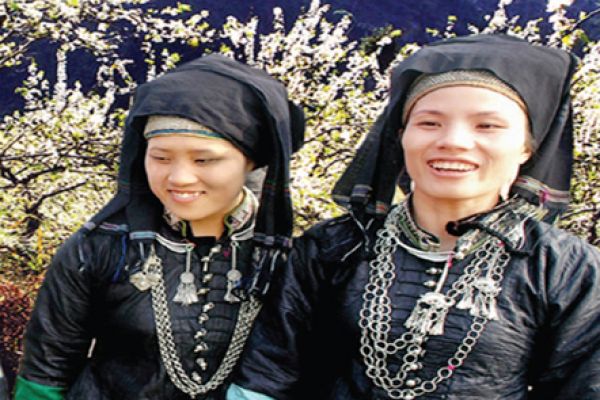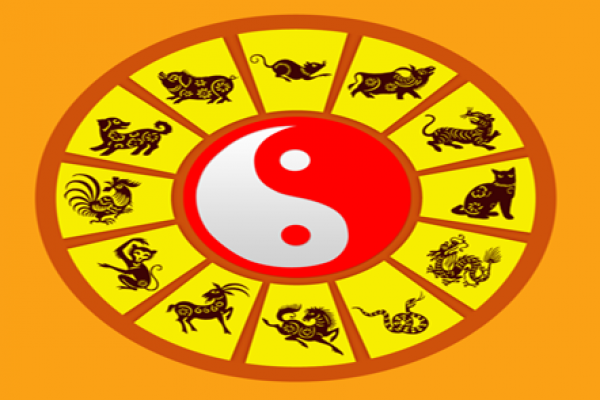Villages in Hung Yen are located along river basins or gather into small hamlets scattering on rice fields or around areas, which are surrounded by green bamboo ramparts. Each village has a communal house beside a century-old banyan tree and big water well. The banyan tree, water well and communal house`s yard have not only rooted deeply in the mind of local people from their childhood, but also left a fadeless print in expatriates` mind.
Looming behind green bamboo ramparts are communal houses, pagodas, temples and shrines. From a long distance, waving roofs of the communal house can be seen among luxuriant green tree canopies. Huge ancient trees surround the house and their green leaves embellish the roofs, making the scenery more vivid. Trees at pagodas and temples are secular ones green all the year round, such as banyans, fig trees, longan and bombax.
A pagoda in Hung Yen is often built in the "noi cong ngoai quoc" architectural style which means Cong (Chinese character: Gong) in the inner part and the Quoc (Chinese character: Guo) in the outer. In the pagoda`s inner part, there are two rows of houses laying in parallel and linked by a transversal house called Thieu huong (Incense Burning) where Buddhist rites are conducted. In its outer part, there are two roof corridors linking the front with the rear of the two main buildings forming a rectangular frame. Each pagoda has a three-door Entrance (Tam Quan) featuring three different mysterious views of the Buddha about the world. Passing by the three-door Entrance is the Tam Bao area, which includes three houses: Tien duong (Ancestor-worshipping House), Thieu huong (Incense Burning House) and Thuong dien (Sanctuary). At present, in Hung Yen, there remain some relics of Huong Lang (Lang) Pagoda (in Minh Hai commune) built in the Ly dynasty and Thai Lac Pagoda (in Lac Hong commune, Van Lam district) built in the Tran dynasty. These are Hung Yen`s most ancient pagodas having great architectural and sculpturing values.
Legend has it that Huong Lang Pagoda was built by Queen Mother Y Lan. However, the pagoda was destroyed in the resistance war against the French colonialists. Its relics include a stone lion, four big stone pillars and ten stone weasels standing on doorsteps. Besides, there remain many art patterns of flying phoenix and chrysanthemum dating back to the Ly dynasty. In addition, Thai Lac Pagoda has preserved 16 wood carving boards, which date from the Tran dynasty. The boards have different features such as a fairy offering incense while riding a phoenix, a fairy playing music or playing the flute, a fairy sleeping in the clouds, fairy offering flowers. All the boards` carving lines are very skillful, reflecting the Vietnamese social life in the Tran dynasty.
Unique architectural features of pagodas and temples in Hung Yen are also displayed in the architecture of Da Nguu Temple (in Van Giang district) with 100 carved pillars, of Da Hoa Temple (Binh Minh commune, Khoai Chau district) with 18 board-shaped ridges, of Ung Temple (An Thi district), An Xa Temple (An Vien commune, Tien Lu district) with a Cham-style terra-cotta tower and a stone-sculpture sanctuary�
The Pho Hien relic complex consists of 12 nationally recognized relics built in Chinese-style architecture. Along with their typical architectural features, these relics have preserved many offering items, palanquins, hammocks, horizontal lacquered boards, many pairs of wood panels with skillfully inscribed parallel sentences.
Hung Yen ranks fourth nationwide in terms of the number of relics. It boasts over 800 historical and cultural relics, 132 of which are recognized as national sites, and many of them are belief and religious works.





